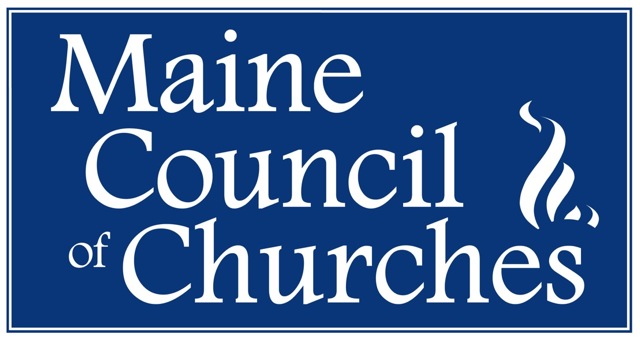You can’t get to Easter without walking through a graveyard

Every now and then, my father and I visit the Laurel Hill Cemetery in Saco. As the saying goes, you can’t swing a dead cat in there without hitting a tombstone of some relative of ours. But there’s one grave in particular whose headstone stops me in my tracks every time. It’s the grave whose headstone reads “Jane Field.” Obviously (I hope), I’m not buried there. My namesake is. It’s the grave of my great-grandmother, Jane Augusta Barrows Field, born 1870, died 1948. And every time I stand looking at her (and my) name carved in granite, I feel a little chill and the hair on the back of my neck lifts up. It’s a spooky thing to stand on a grave with your name on it. Does it mean my faith isn’t strong enough if I shiver at this vivid reminder of my own death-to-come? I don’t think so.
Though some say that Christians treat death as if it were just a simple freeing of the soul from the prison of the body, a quick transition to blissful immortality, because they believe Easter gives them some kind of cosmic “get out of jail free” card that spares true believers from the sting of death, nothing could be further from the truth.
The Bible makes no bones (excuse the pun) about the seriousness of death. In both Hebrew and Christian scripture, death is clearly described as causing anguish, pain, despair, and grief. The church’s annual observance of Lent begins with Ash Wednesday, when, with the mark of ashes pressed onto our skin, we are reminded “you will return to the ground, for out of it you were taken. You are dust and to dust you shall return, ashes to ashes, dust to dust.” During the forty days of Lent that follow that somber ceremony, we journey with Jesus to Jerusalem and on to Golgotha (literally, “the place of the skull”), a place littered with the bones and corpses of all those crucified by the Roman empire. There, on Good Friday, we will stand to watch Jesus of Nazareth die on a cross. That does NOT sound like a faith that tries to dodge death or deny its power.
Yes, we have Easter, too, with its trumpets and lilies and an empty tomb victory over death, but it is not Easter yet. It’s getting closer, true, but, as my favorite preacher, Barbara Brown Taylor says, “we have to walk through a graveyard to get there.” We have to walk through Holy Week, from the first Hosanna! of Palm Sunday to the last scrape of rock against rock as the stone is rolled in front of Jesus’ tomb after his lifeless body is laid inside. We have to walk through a graveyard to get to Easter.
The stories of Holy Week (and of Easter, for that matter) never say that death doesn’t matter, or isn’t important, or shouldn’t upset us. Quite the contrary. Just like our Holy Week walk, each of those stories marches straight ahead through a graveyard, where God asks us (and we ask ourselves), “Mortal, can these bones live?”
Despite how final the tomb’s dank stench is, the answer to the questions Holy Week and Easter raise is this: God gets to have the last Word, and death does not. In the answer, God reveals the divine purpose to save and to bring life out of death, to affirm love in the midst of loss, hope in the midst of despair, and to overcome the thing that overcomes us all. God is in the business of calling forth light and life where we see only darkness and death. Even more amazing, God accomplishes this not by going around death, but by going right through it, traveling through a graveyard during the mysterious pause between the horror of Good Friday and Easter morning’s joy.
But Jesus’ resurrection isn’t just a preview of “coming attractions” when our own resurrection is accomplished at some point in the distant future. Jesus says, “I AM the resurrection and the life” not “I will be.” He speaks in the present tense because resurrection life begins here in this life, before it continues in the life to come. Resurrection isn’t only about our final physical death and what happens to our souls after we die. Resurrection is also, and always, about the continual miraculous raisings and renewals that happen throughout our lives, transforming us again and again as we experience all the smaller deaths life deals out along the way.
God stands at the mouth of every tomb we find ourselves in, not just the tomb into which we’re laid at the end of our physical life. God stands in front of every tomb we manage to hole up in our whole life long—tombs of despair or denial; tombs we find ourselves in after we’ve died to an old way of living but wonder if we will really ever live again—after a divorce, a job loss, your last child growing up and leaving home, a retirement, being forced to move from a home you loved, the aftermath and devastation of a natural disaster or a war, the death of someone you love. In the midst of such transition or loss, living can feel more like dying. Like Ezekiel’s Israel, living in exile in what feels to them like a graveyard full of old bones, we say, “Our bodies are dried up, our hope is lost, we feel cut off completely.”
It is then that God arrives on the scene, weeps for the pain and the loss we have suffered, and then yells into that tomb of ours, “Come out! Come out so that you might truly live!” And with the Spirit of God breathing new life into our dry bones and bandaged limbs, just as it blew life into the very first human beings when from dust and ashes they were created, love unbinds us, sets us free, and we rise. We rise.
We at the Maine Council of Churches wish you a blessed Holy Week walk through the graveyard, and a joyous Easter morning when you come out the other side.

Rev. Jane Field, Executive Director

